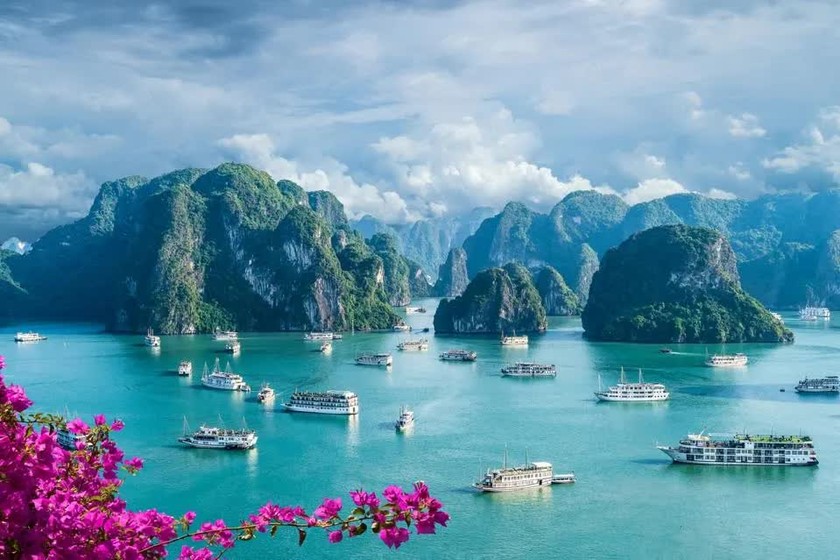Ha Long Bay, recognized as a UNESCO World Heritage Site in 1994, and re-recognized in 2000 and 2011, is one of the most famous landmarks in Vietnam, renowned for its majestic beauty of limestone islands, stunning natural landscapes, and unique ecological value.
1. Characteristics and Geographical Location:
Ha Long Bay is located in the northern part of Vietnam, in Quang Ninh province, approximately 165 km from Hanoi. The bay covers an area of around 1,553 km² and includes more than 1,600 islands, both large and small, forming a unique natural landscape with islands, beaches, caves, and characteristic ecosystems.
The limestone islands of Ha Long Bay were formed around 500 million years ago and have been shaped by geological and climatic changes over millions of years. These islands create a stunning landscape with limestone peaks rising from the turquoise sea, interspersed with small bays, fine sandy beaches, and mysterious caves.
2. Geological and Ecological Value:
Geology: Ha Long Bay has significant geological value. The formation of the limestone islands has created spectacular landscapes, including rocky points, islands rising from the sea, and limestone caves. It is one of the oldest limestone formations in the world.
Ecology: Ha Long Bay is also home to a rich ecosystem, with many marine species and various ecosystems, ranging from mangrove forests and wetlands to marine ecosystems. It is a habitat for many rare animal species, including some marine animals and migratory birds.
3. Notable Places in Ha Long Bay:
Sung Sot Cave: This is one of the most beautiful caves in Ha Long Bay, famous for its strange stalactites and stalagmites formed over millions of years.
Ti Top Island: One of the most beautiful and famous islands in Ha Long Bay, it features a pristine beach and impressive limestone mountain ranges. From the island’s peak, visitors can enjoy a panoramic view of Ha Long Bay.
Quan Lan Island: One of the largest islands in Ha Long Bay, Quan Lan attracts visitors with its beautiful beaches, which have not yet been heavily impacted by tourism.
Bai Tu Long Bay: Located in the northeastern part of Ha Long Bay, this bay is less exploited and retains its pristine beauty, with large limestone islands, making it an ideal destination for those seeking peace and solitude.
4. Tourism Activities:
Sightseeing and Exploration: Visitors can join boat tours to explore the limestone islands, small bays, or famous caves in the area.
Water Sports: Activities such as kayaking, scuba diving, swimming, or beach lounging are popular experiences in Ha Long Bay.
Cultural Exploration: In addition to its natural beauty, Ha Long Bay is home to many local communities, such as the Kinh, Dao, and Tay ethnic groups. Visitors can participate in cultural activities and enjoy the region’s specialty cuisine.
5. Conservation and Sustainable Development:
With its exceptional natural and cultural value, Ha Long Bay is being carefully conserved to ensure the sustainable development of tourism and the protection of the ecosystem in the area. Tourism activities are managed and regulated to minimize negative environmental impacts, while raising awareness of the importance of preserving and protecting this natural heritage.



